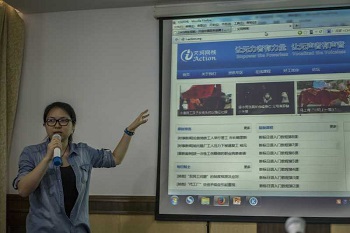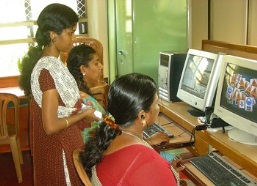
In UNDEF projects, technology often serves to facilitate access, learning, sharing and exchange but there are also pitfalls – such as the speed with which technology changes and different levels of knowledge.
Key lessons:
- Social media are an easy way to create networking platforms among project participants and to attract interested people from other locations and sectors.
- Do not underestimate the rapidity of social and technological changes – you may end up building your project strategy on IT or social media tools that could become obsolete over time.
- Technology exists in a context – politics trumps over technology.
- When involving Information Technology to promote e-learning, grantees need to consider whether the project’s target group is comfortable with the use of computers or smart phones, has access to them, and if incentives are needed to motivate their use.
- Well organized and regularly updated project websites can serve as functional online resources for continuing the dissemination of information and exchange of knowledge from a project – provided their actual existence and usefulness is properly promoted.
The following are some lessons from previous UNDEF projects using technology:
Projects using technology need to match the technology to the actual usage
The project was built around the contribution that social media and E-Learning – through the project web-site – might make to connecting workers to each other and a wider world of knowledge, ideas and practical possibilities, to help them to change their lives for the better. Unfortunately, it was found that young workers were not familiar with computers, had limited access to them, and little time or inclination to work on E-Learning courses. Inexpensive smart phones are favoured by young migrant workers as their tool for communication.
From Project: Empowering Vulnerable People through Internet: E-Learning Initiative for Young Migrant Workers in China
Using the wrong technology excludes potential beneficiaries
The majority of the participants did not have easy, affordable access to Internet. The grantee realized this early in the implementation and disseminated training materials in hard copy. Despite this, assignments had either to be submitted by e-mail or put in the post – which was costly and difficult for those living in remote areas. As a result, many of the women did not complete the course.
From Project: The Bottom-up Governance and Leadership Programme for Women in the Pacific
Despite positive aspects of relevance, the ultimate barriers to free and fair elections in Africa and elsewhere are political, not technological. That being said, the logical framework of the project explicitly targeted the elections community, not the actual or potential voters, who, of course, were reasonably considered to be indirect beneficiaries of the project.
From Project: Development of Sustainable Voter Registration Methodologies in Sub-Saharan Africa
Adapt planned activities as technology changes
The project’s planned SMS platform was overtaken by the use of social networks, partly because more participating women had access to smartphones than was originally expected at project planning stage, and partly because of usage costs: text messaging was significantly more expensive than the data subscription allowing access to the Internet and the use of WhatsApp and Facebook.
From Project: Promoting Human Rights through Providing Access to Information for Marginalized Women in Zimbabwe
Use social media to create effective networks
The project did not take advantage of the internet or social media to develop a common platform for the project to connect the state networks and draw in supporters from other locations and sectors on project issues and action. Although many of the beneficiaries may not have had access to the internet, most of the participating CSOs did, as did local officials, and leveraging information technology would have been a programmatic and cost-effective way to deepen participation.
From Project: Civil society advocating for quality education & healthcare in Mexico

